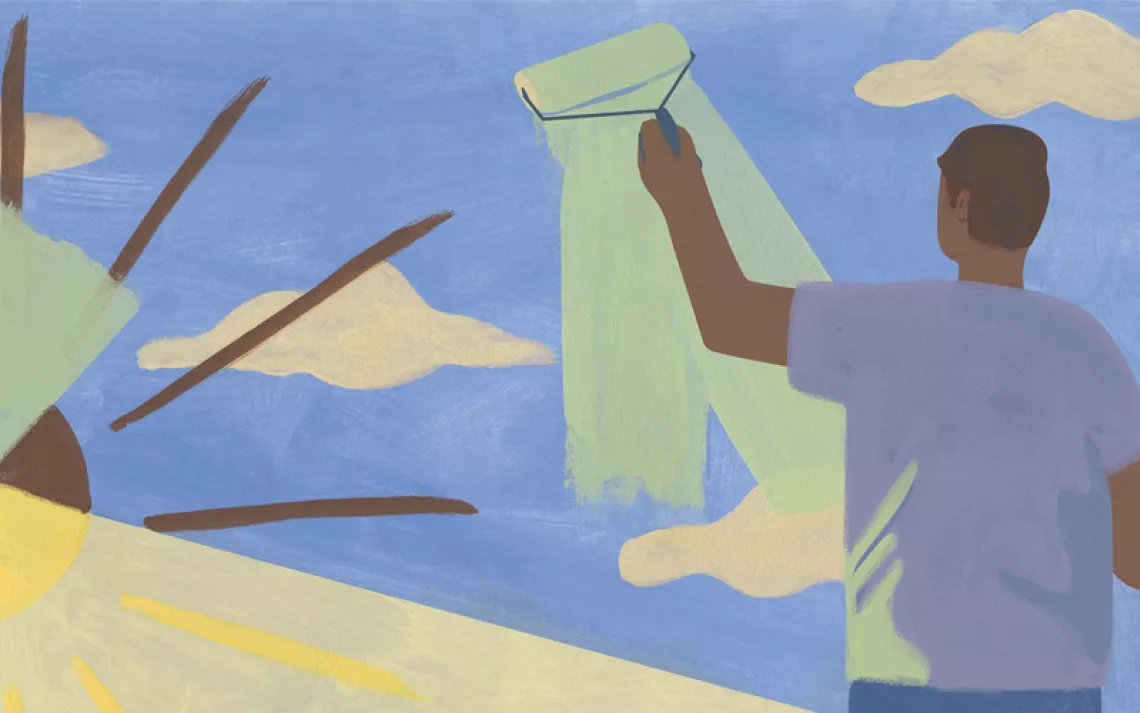A Parent Looks for Solace During the Pandemic
Kate Zambreno wrestles with collective grief in "The Light Room"

When COVID shut down her daughter's preschool in 2020, Kate Zambreno found a desire, "something approaching a mania," to teach her child about the seasons. "I think I believed that would provide her with some stability, and something to celebrate as well," Zambreno writes in her new memoir The Light Room: On Art and Care (Riverhead Books, 2023).
Like many pandemic parents, Zambreno, a novelist and an academic, turned to the outdoors for solace. She clung to forest school opportunities; she weighed the risks of going to public places such as museums. This collagelike meditation about her experiences, written in between her other (newborn) daughter's feedings and naps, is Zambreno's attempt to figure out what beauty can come of mourning. She wonders, specifically, "whether the mourning of others can exist alongside the mourning of a dying planet, and whether it is permissible for this mourning to exist alongside an ecstatic contemplation of the natural world." After a babysitter asks why anyone even has children, Zambreno bemoans the callousness of such nihilism "when there are real consequences for children now."
In the book, Zambreno contemplates collective grief and solastalgia—philosopher Glenn Albrecht's term for the distress caused by environmental change—recalling the 1636 Dutch tulip mania that resulted after the immense loss during the previous year's plague and the 1950s parent cooperatives that rose in Germany in the wake of fascism.
The Light Room is a lyrical treatment of what it's like to be a new parent during a global pandemic. Zambreno also makes a case for why it's crucial to go on living and making art in the face of so much death, and how we can find meaning in the caring for others.
 The Magazine of The Sierra Club
The Magazine of The Sierra Club



